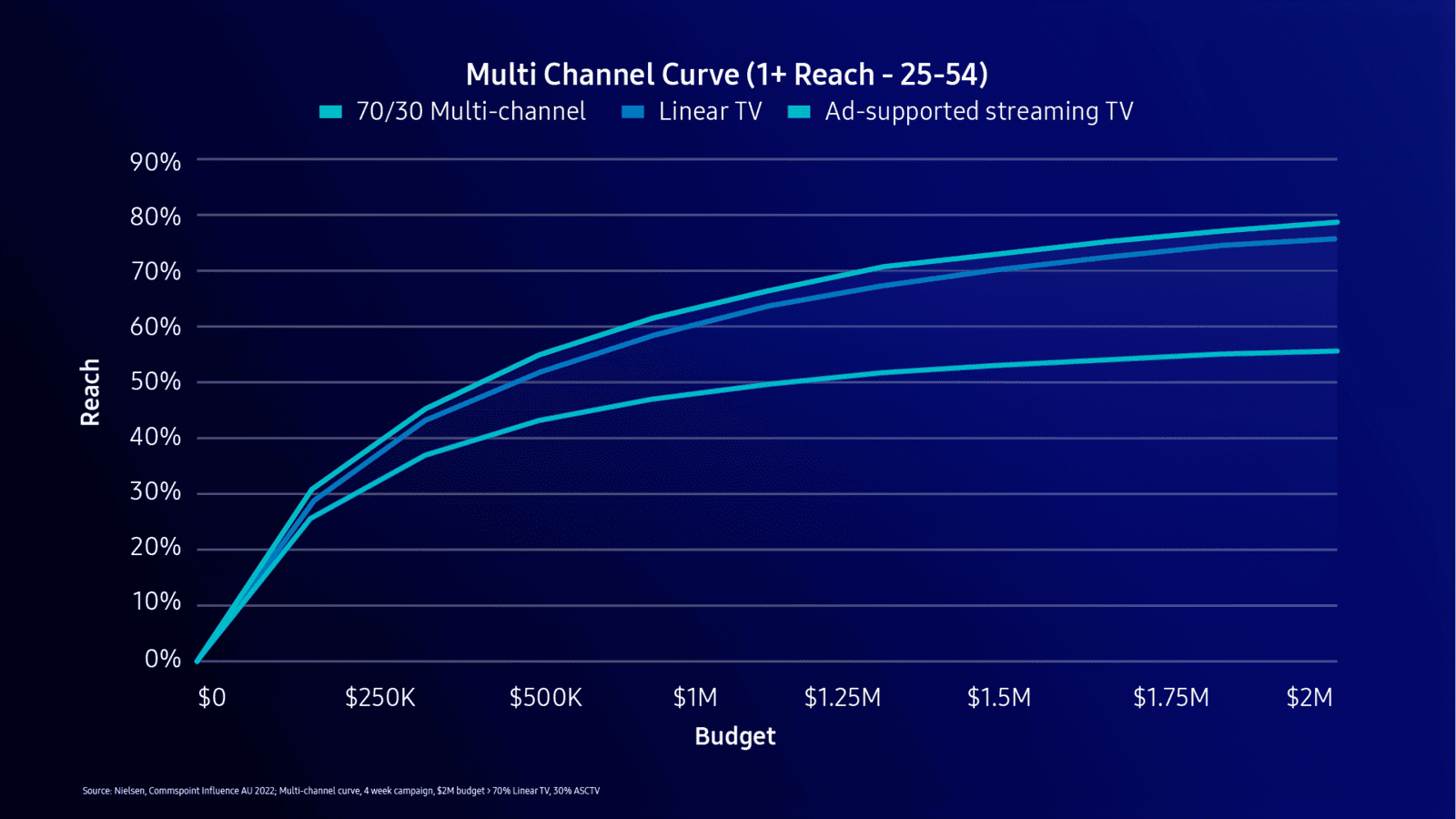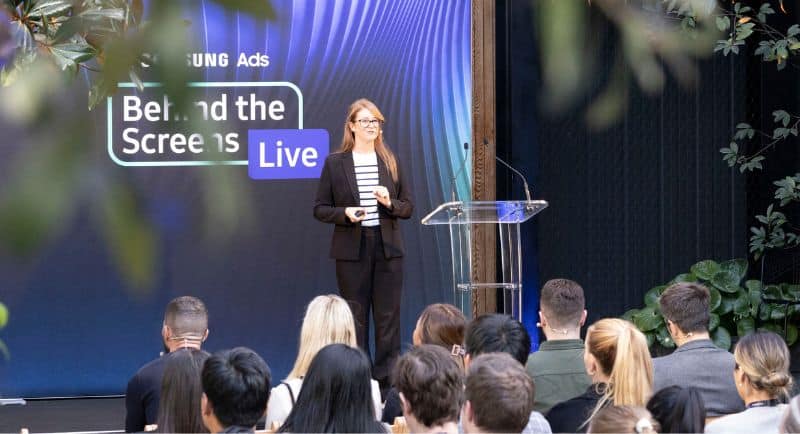Advertisers can maximise reach and efficiencies by allocating 30% of their Total TV budget to ad-funded streaming, according to a new study by Samsung Ads and Nielsen.
‘Behind the Screens’ examined how advertisers can deliver greater impact among key demographics through a 70/30 combination of linear and streaming ads without increasing budgets.
Linear and streaming TV delivers greater reach with ‘The Rule of 30’
The creation of the ‘Rule of 30’ provides a general rule of thumb for advertisers who are uncertain how much of their Total TV budget should be allocated to ad-supported streaming on Connected TV. Over 8.6 million Australians watch video via CTV daily, according to the IAB.
The study modelled the effects of different TV advertising budget allocations across linear and streaming. Using a broad 18 to 54-year-old demographic and maximum campaign spend of two million dollars, the study demonstrated the impact achieved by applying the Rule of 30.
It found that campaigns produced a higher net reach when 30% of the budget was allocated to ad-funded streaming and 70% to linear TV ads. Samsung Ads and Nielsen said advertisers can maximise reach and minimise over-exposure through this approach, without increasing budgets. Both noted that the optimal allocation will vary across industries, audience preferences, campaign objectives and budgets.
Ad-funded streaming reaches young people faster and more efficiently
The report found that brands wanting to reach audiences under 40 years old can achieve greater 3+ reach with ad-funded streaming compared to linear TV ads, with any budget of $1.3 million or less. Advertisers on smaller budgets – $800K or less – looking for maximum impact can also build reach faster amongst younger audiences by placing over half their budget (55%) on streaming.
A recent Samsung Ads study also found streaming services draw in younger audiences, who perceive streaming ads to be eight times more modern versus non-streaming environments.

Low budget campaigns aimed at 25-54 year olds benefit from streaming as part of media mix
Historically 25-54-year-olds have played a pivotal role in linear TV buying. The study shows ad-funded streaming can now provide the same reach as linear TV ads in this age range for campaigns with lower budgets. For budgets over $350,000, linear TV ads alone still provide a higher reach compared to ad-funded streaming.
However, when the Rule of 30 is applied across this demographic on campaigns up to $2 million, a combination of linear TV ads and ad-funded streaming still delivers a higher maximum reach across all spend levels, according to the report.
TV spend lags behind consumer viewing behaviour
Over two-thirds of all time spent on Samsung Smart TVs is within streaming environments, and the report noted that as more ad-funded tiers are introduced and new free ad-supported streaming TV (FAST) services become available, advertisers have more ways to reach these audiences.
Despite the shift to streaming, advertising dollars have been slow to catch up. According to the study, a single-digit percentage of the $3.4b invested in Australian TV advertising last year made its way to streaming. When you compare this to more mature markets like the US or UK, CTV ad spends are 29% and 21%, respectively.

Alex Spurzem
Alex Spurzem, Samsung Ads managing director, ANZ & SEA, said, “To achieve success in today’s TV landscape you have to reach audiences where they choose to watch – TV spend is playing a game of catch up. What the study shows is that by rebalancing budget allocation, advertisers can optimise their reach, without needing so much as one additional dollar.”
Kirsten Riolo, head of publishers and platforms at Nielsen, added “Engaging specific audiences while striking the balance of reach and frequency is a challenge facing every marketer. But what’s evident in this study is that combining linear and streaming ads in a TV campaign can be key in reaching main demographics across all categories. The Rule of 30 isn’t designed to be a one-size-fits-all: rather a supporting guide for those in search of even bigger impact.”

Kirsten Riolo
